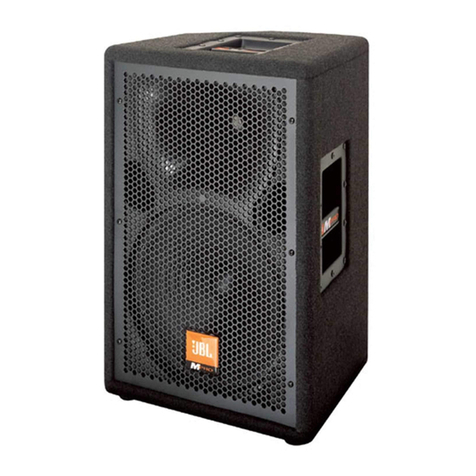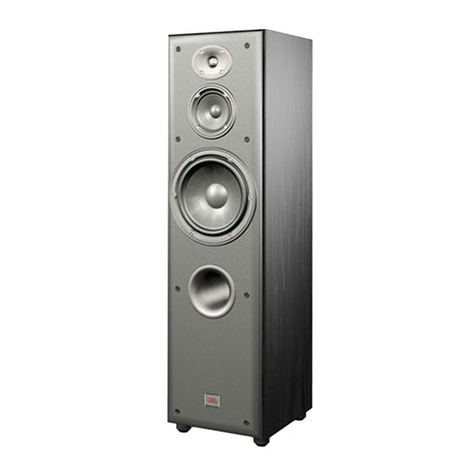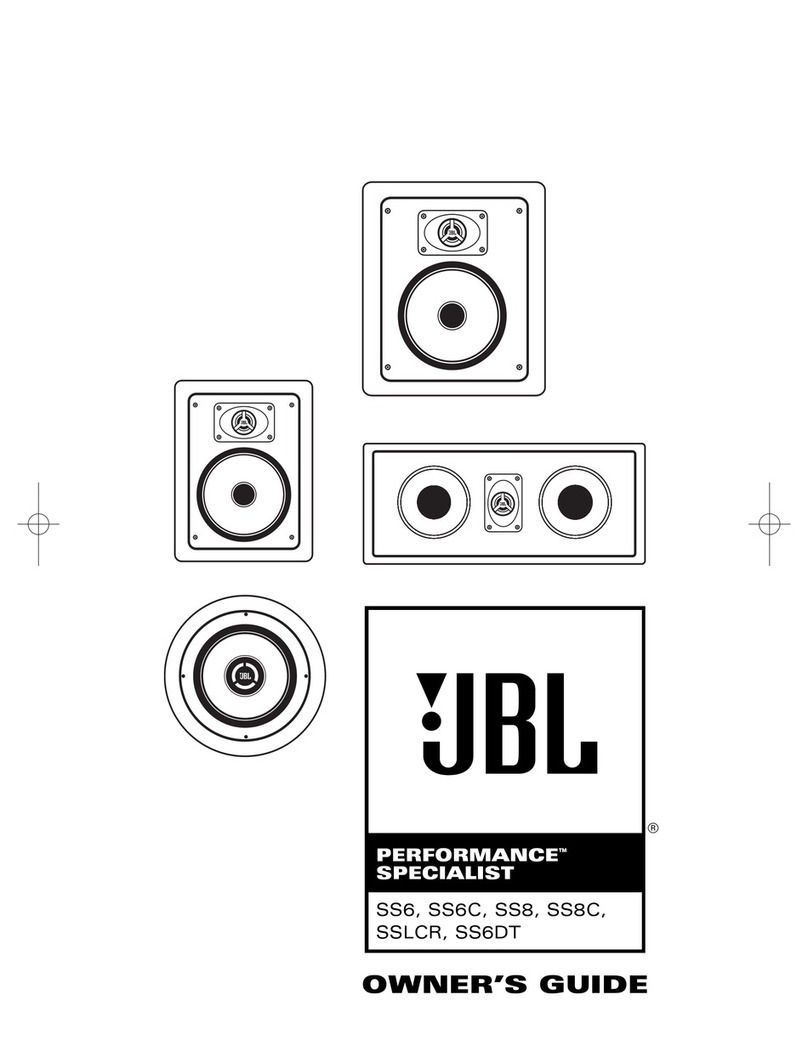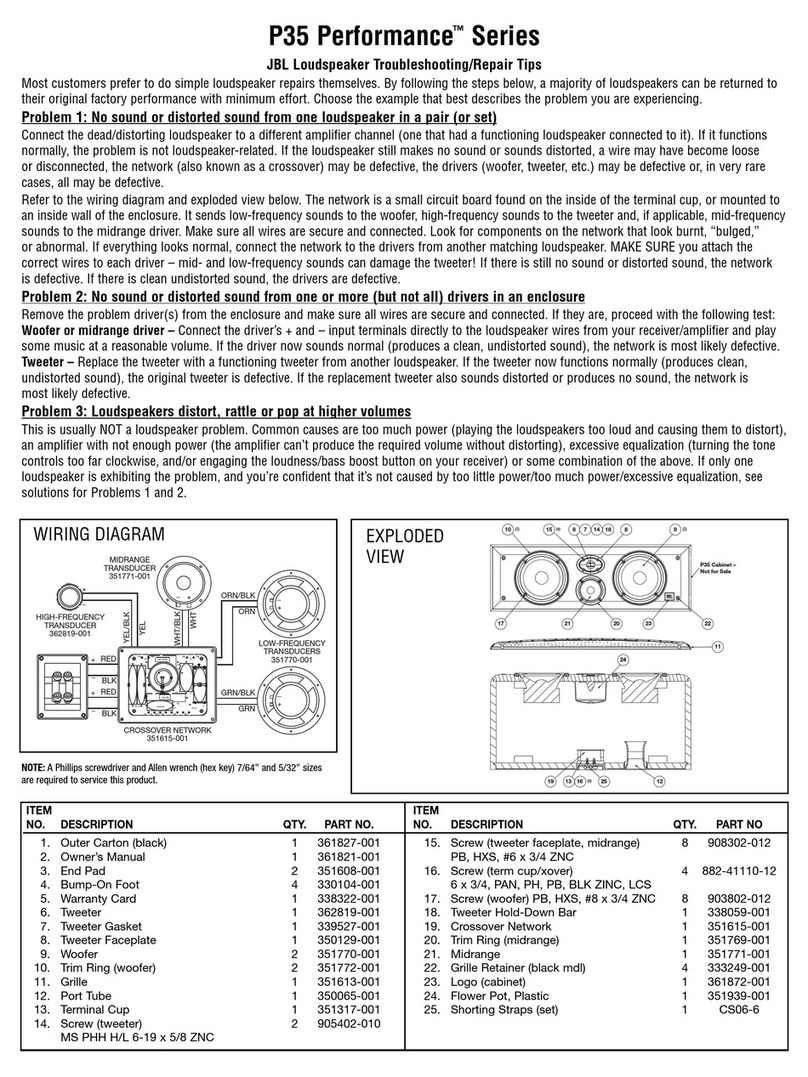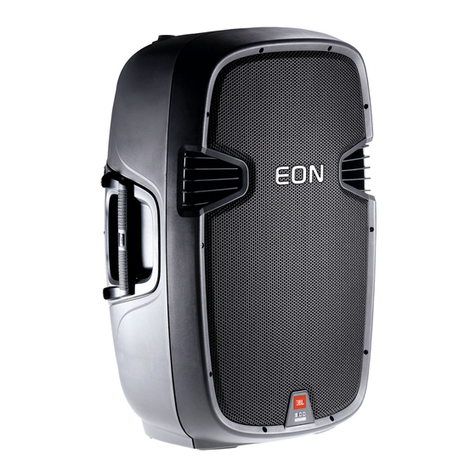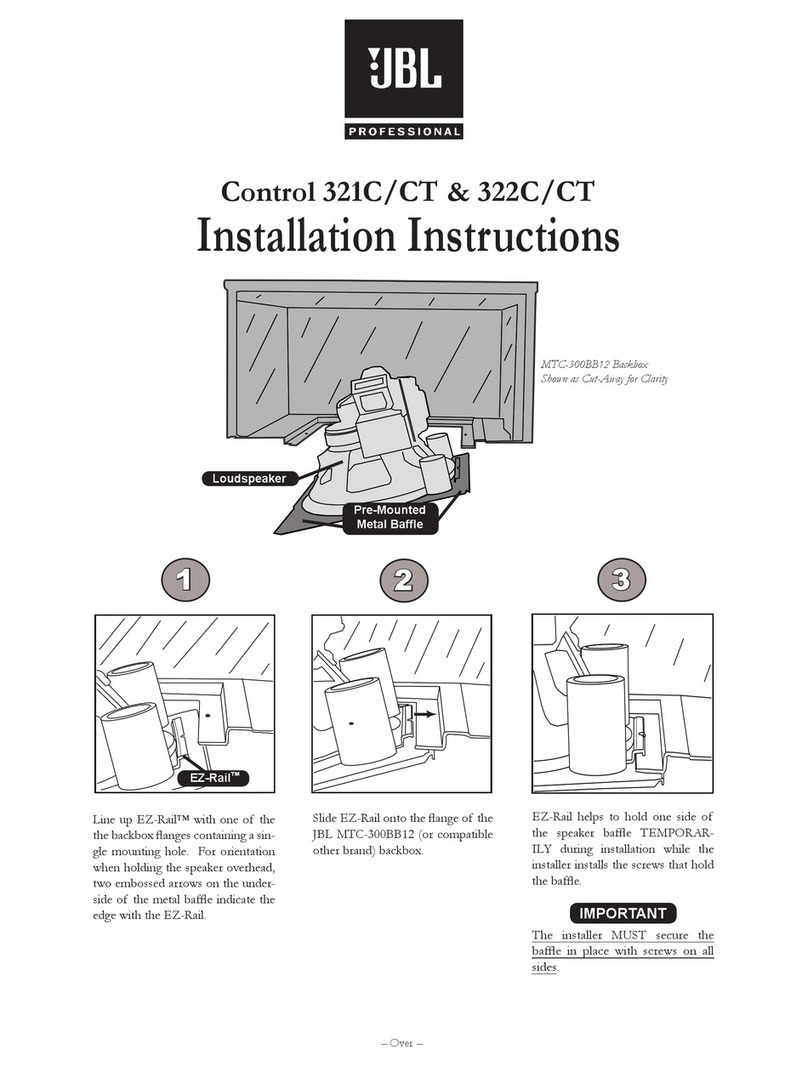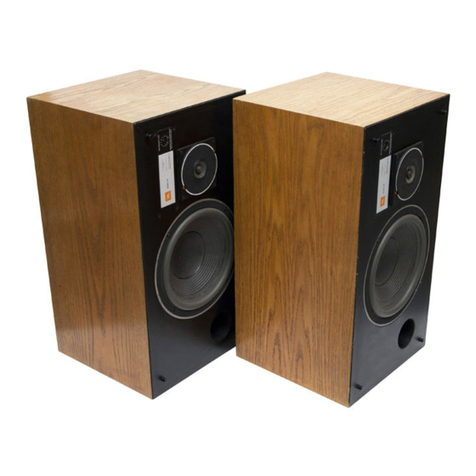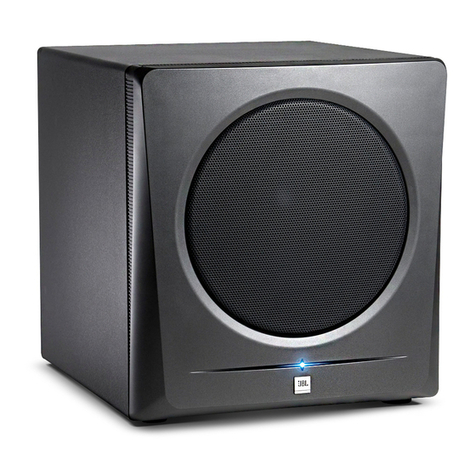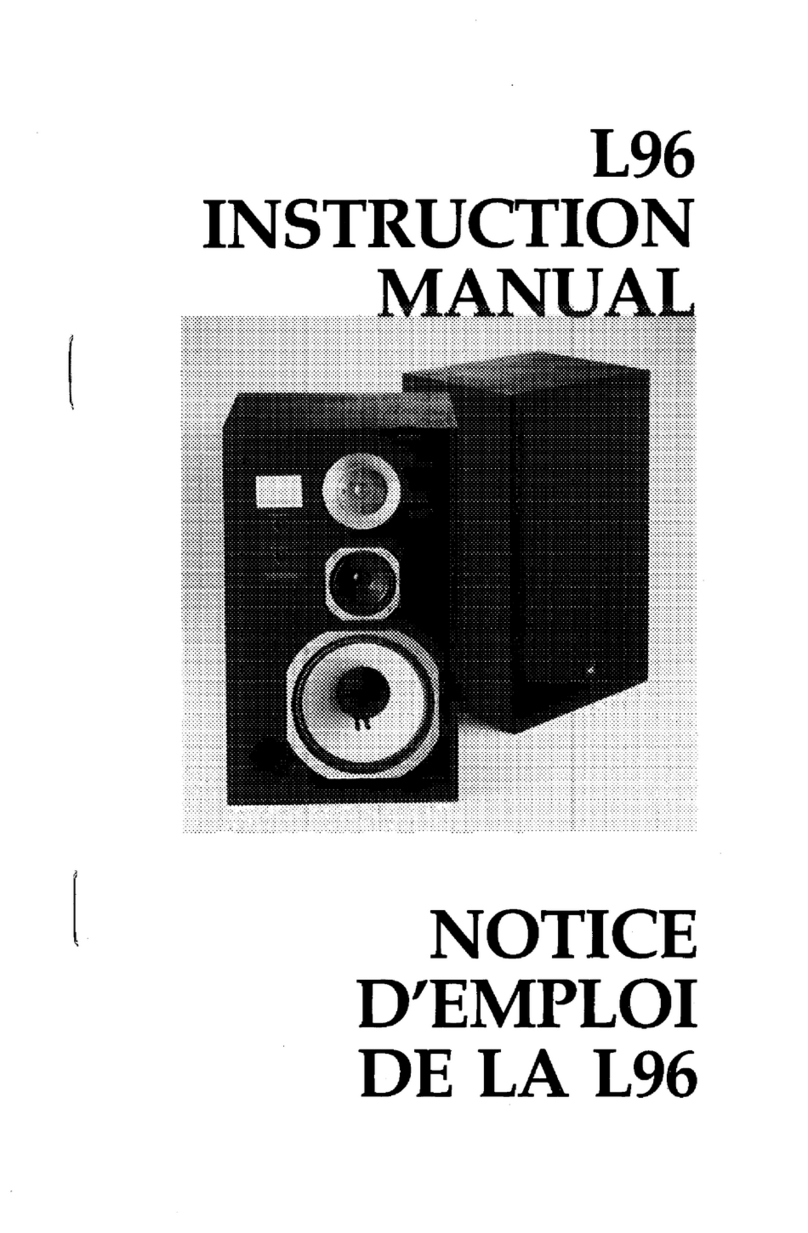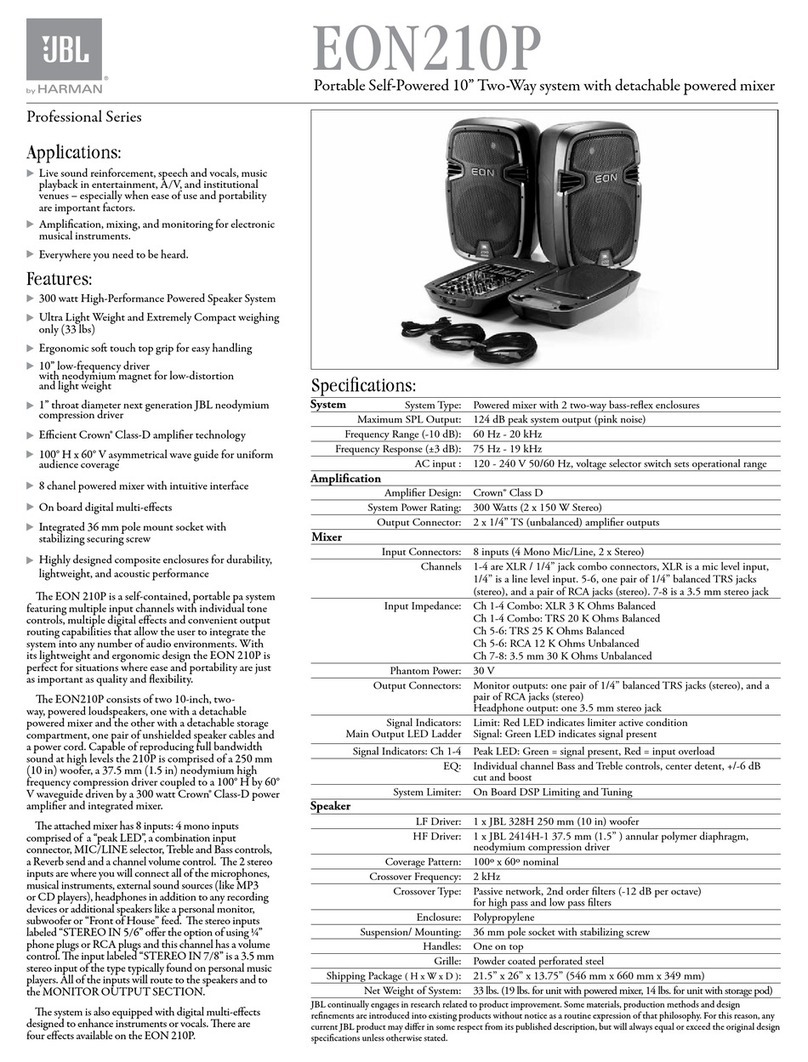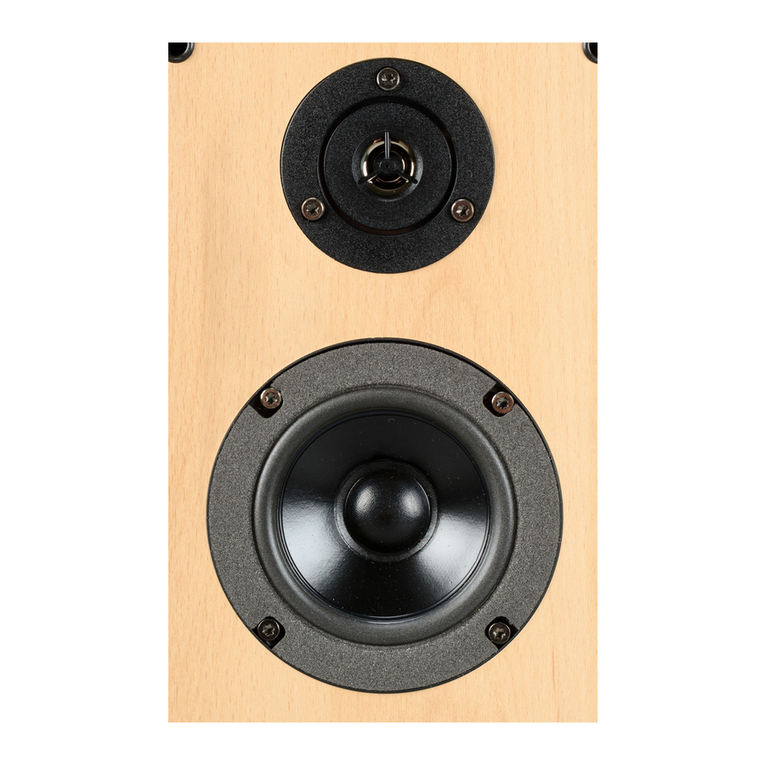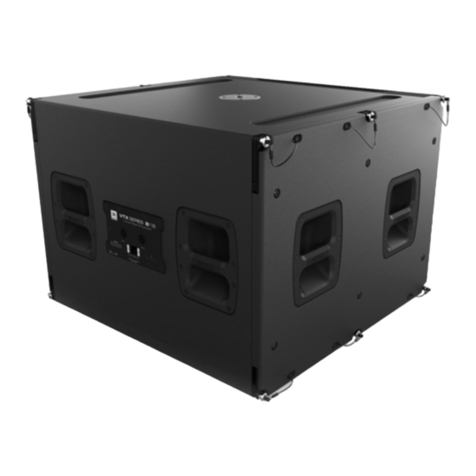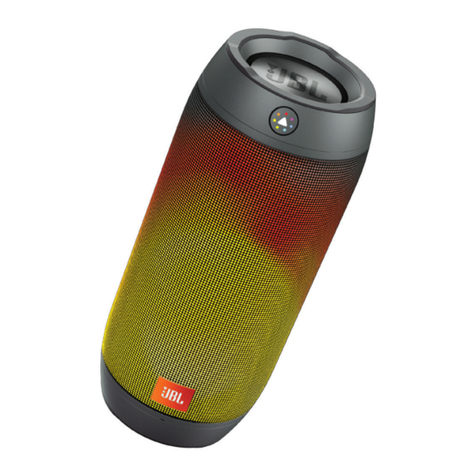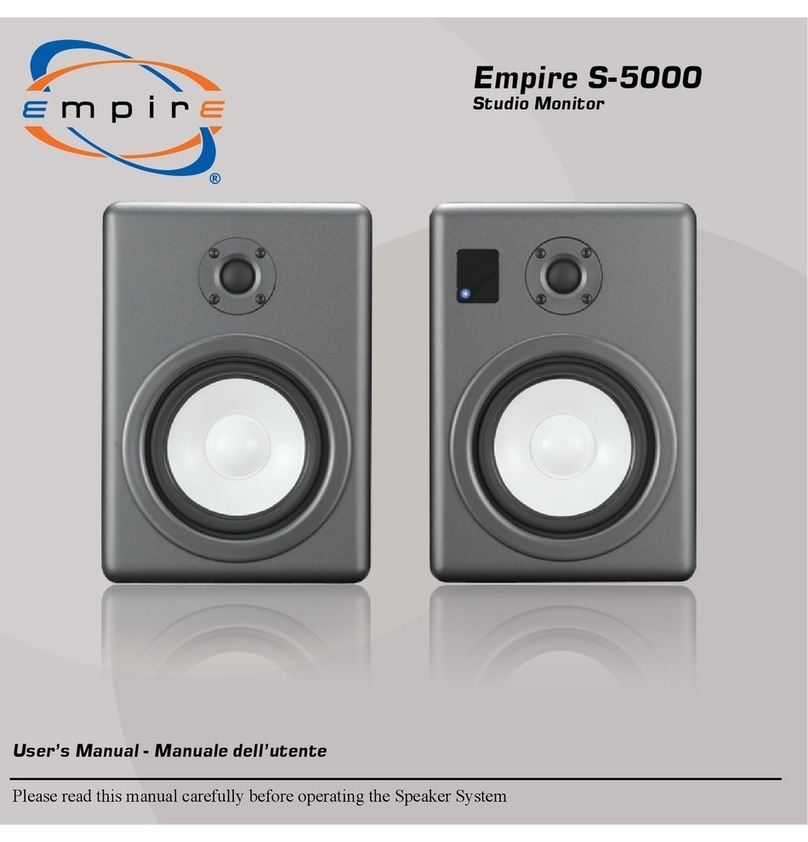
5
JBL Professional Control 200 Series
Control 200 Series Loudspeakers include Euroblock or
Phoenix-type locking input connectors that allow the system
to be “pre-wired” before the speakers are installed.
Connecting the Wiring to the Euroblock -- Connect the
wiring to the removable locking connector
that is INCLUDED with the speaker by
stripping the insulation back about 5 mm
(about 3/16 inch), inserting the bare end of
wire into the connector and screwing down
the hold-down screw until tight using a small
flatblade screwdriver. Tighten any unused
screws to avoid vibration. Using terminal
block connectors allows the system to be pre-
wired before final installation of the drivers.
When wiring Control 200 Series loudspeakers,
always use proper electrical wiring practices
in accordance with your area’s building codes
and regulations.
Control 226C/T
Connecting the Input Terminal Block on the Control
226C/T -- The input terminal cover on the Control 226C/T
is fitted with a conduit connector for running and securing
wiring or conduit to and from the unit. To wire the unit:
1. Loosen the screw on top of the input terminal cover and
then remove (and save) the input terminal cover screw on
the side of the can.
2. Swing open the input terminal cover and remove the
euroblock connector.
3. Insert the bare end of wire into the euroblock connector
and secure the wires with the hold-down screws. (see
Connecting the Wiring to the Euroblock)
4. Loosen the conduit
connector on the input
terminal cover and insert
the wired euroblock
connector through the
conduit connector opening.
Connect the euroblock to
the matching receptacle.
5. Shut the input terminal
cover and replace and
tighten the terminal cover screws.
6. Allowing sufficient strain relief for the input wiring and re-
tighten the conduit connector on the terminal cover.
NOTE: The input terminal
cover on the Control 226C/T
also includes a .75 in (19 mm)
knockout for an additional
conduit clamp. This knockout
point can be used in addition
to the conduit connector
located on the top of the can
and is useful for wiring loop-
thru runs or when access
is limited on the top of the
Control 226C/T can.
Guide to Connection Pins on Control 226C/T -- There
are two (2) removable locking input connectors with two (2)
terminals on each. The pin functions are listed on the label
located on the cover on the rear of the can.
On the Control 226C/T, connect the negative wire to the “-”
or pin 2 and connect the positive wire to “+” or pin 1. Pins 1
& 2 are looped to pins A & B, respectively (Pin 1 connects
to Pin A and Pin 2 connects to Pin B) inside the speaker.
Pins A & B are intended as loop-through connections to
subsequent loudspeakers. (See next page Using Loop-
Through Terminals).
To select the operating mode or desired output tap of the
loudspeaker, simply rotate the tap selector switch located on
the front of the baffle to the desired setting.
Note: Both 70V/(100V) connections and low impedance
connections are made at the same pins. When using the
transformer tap selections, be sure that the power amplifier
is set on 70V/(100V) Mode and the leads feeding the system
are connected to 70V/(100V) outputs on the amplifier.
Control 227C & Control 227CT
Guide to Connection Pins on Control 227CT -- The
removable locking input connector contains 5 terminals, as
marked on the connector. The pin functions are listed on the
label located on the crossover frame.
WIRING INSTRUCTIONS
AD
C
BE
INPUT CONNECTION FROM
70V/100V AMPLIFIER LINE
Com 30W15W
7.5W 60W
70V
Com
60W
30W15W
N/C
100V
BLACK
ORANGE
PURPLE
BLUE
WHITE
Control 227CT:
CONNECTION
+
IN
1 2
-
IN
Control 226C/T
+
A
-
Loop
Thru
B
Loop
Thru
Control 226C/T:
Control 226C/T
Terminal Shown
